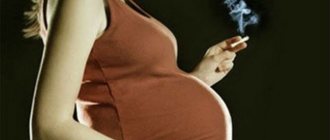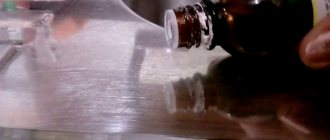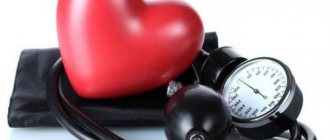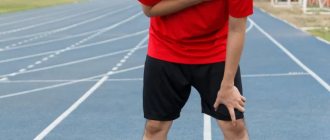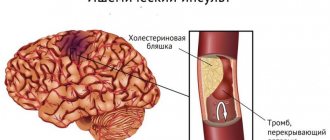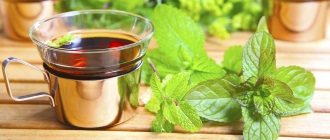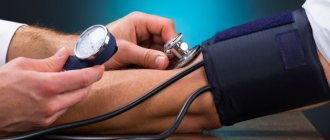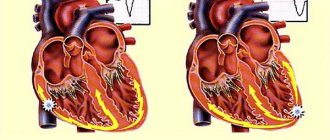The article was verified by doctors at Euromed Clinic✅
As data accumulated on the possible consequences of COVID-19, scientists noticed that the so-called post-Covid syndrome is often more severe than the viral infection itself.
In addition to damage to the nervous and respiratory systems, kidneys, liver and other organs, doctors note frequent complications after coronavirus on the heart and blood vessels, which can significantly limit a person’s daily and professional life, as well as cause delayed mortality (death).
There is a sufficient number of studies proving that coronavirus causes complications on the human heart and blood vessels, and such complications also affect patients who have not previously suffered from diseases of the cardiovascular system.
Even six months after suffering from COVID-19, doctors detect inflammation of the heart tissue in patients, including those who suffered from the disease asymptomatically.
How to recognize an impending heart attack
Doctors understand a heart attack as damage to the heart muscle caused by blockage of the heart artery and deterioration or complete cessation of blood supply to the organ. In such a situation, if the attack is not stopped and normal blood flow is not restored, myocardial tissue will begin to die 30 minutes after the first signs of a heart attack.
In addition to thrombosis of the artery, the attack occurs against the background of its spasm, stratification and penetration of a foreign body into the cavity of the capillary (for example, particles of a tumor). A heart attack is caused by various reasons, but the main ones are obesity, hypertension, heredity, smoking and alcoholism, diabetes, frequent stress, and lack of physical activity.
The risk of developing an attack is higher in people with elevated blood cholesterol levels, diseases of the cardiovascular system, and also after reaching 65–70 years of age. Specific signs of a heart attack include severe pain in the left side of the chest, prolonged signs of angina, panic attacks, cold sticky sweat and shortness of breath. The pain is burning in nature, and an attack of angina pectoris is not controlled by taking Nitroglycerin.
The attack can last two hours or drag on for a day, so at the first symptoms you need to seek medical help.
There are several types of heart attack:
- typical - its symptoms have already been described, it occurs in most cases;
- gastralgic – abdominal pain predominates, overshadowing other symptoms;
- asthmatic – manifested by severe suffocation;
- arrhythmic - it is characterized by a persistent change in the rhythm of heart contractions, which is life-threatening;
- cerebral - resembles a stroke, often occurs against the background of cardiogenic shock;
- asymptomatic - after suffering this type of heart attack, the victim can find out about it only during an ECG during a routine examination by a cardiologist.
It will probably be difficult or impossible to recognize an atypical heart attack on your own - a quarter of patients do not complain at all about squeezing and burning pain in the chest, which complicates timely diagnosis. The main problem with an asthma attack is that discomfort in the heart is masked as an asthma attack, which makes it difficult for doctors to immediately suspect a heart attack. When you press on the sternum and develop sharp pain, the diagnosis can speed up.
Heart attack and stroke: signs, emergency care, prevention
Myocardial infarction is a disease in which, due to blockage of the coronary artery, the full blood supply to an area of the heart muscle (myocardium) suddenly and abruptly stops, which leads to a severe lack of oxygen (ischemia), nutrients and death of myocardial cells. This area can no longer take part in heart contractions, so the heart cannot provide blood flow to the body. All organs and tissues begin to experience oxygen starvation, which leads to disruption of their function. The main cause of heart attack is elevated levels of cholesterol and certain lipids in the blood.
Typical manifestations of myocardial infarction are a feeling of severe pressure or pain behind the sternum, or slightly to the left or right of it. The pain is most often squeezing, pressing, tearing (feeling of a stake in the chest), sometimes burning. Irradiation of pain to the left shoulder girdle, shoulder, arm, less often to the neck and lower jaw, sometimes to the right half of the shoulder girdle is typical. Occasionally, the pain is localized in the epigastric region. Unlike angina, pain during myocardial infarction lasts more than half an hour, usually several hours. Nitroglycerin taken brings only minor and short-term relief. Severe weakness and cold sweat are often noted. Often in the acute stage of myocardial infarction, patients experience nausea, vomiting, hiccups, and bloating, which are of a reflex nature. In some cases, myocardial infarction is practically asymptomatic.
During the period of pain, the patient's face has a suffering appearance, the skin is usually pale, sometimes with a cyanotic tint. Breathing is rapid. Blood pressure may rise when pain occurs, but soon drops to an unusually low level for the patient. The pulse is frequent, heart sounds are weakened. In most patients, various cardiac arrhythmias can be detected.
If you or someone else suddenly has the above characteristic signs of a heart attack, even with weak or moderate intensity, which last more than 5 minutes, do not hesitate, immediately call an ambulance team. Do not wait more than 10 minutes - in such a situation it is life-threatening.
The recovery period after a myocardial infarction lasts 4-6 weeks. It occurs differently in different patients. Most often, during this period, patients remain able to work, but they sometimes experience angina attacks. In rare cases, the course of the post-infarction period is interrupted by the onset of a second infarction.
The results of large-scale international studies, in particular the INTERHEART study, showed that the following factors have a decisive influence on the risk of developing myocardial infarction: dyslipidemia, smoking, hypertension, abdominal obesity, psychosocial factors (stress, social isolation, depression), diabetes mellitus, reduce the risk : eating enough vegetables and fruits, regular physical activity.
Emergency self-help and mutual assistance measures in case of a heart attack (myocardial infarction).
In our country, up to 80% of deaths occur outside of medical organizations - at home, at work, in the country, in public and other places. Most of them occur suddenly or by the mechanism of sudden death. However, with knowledge of simple first aid techniques on the part of people surrounding a person who finds himself in such a critical condition, as well as everyone’s knowledge of first self-help measures, can in most cases save the patient’s life.
Characteristic signs (symptoms) of a heart attack (myocardial infarction)
• sudden (paroxysmal) pressing, squeezing, burning, aching pain in the chest (behind the sternum) lasting more than 5 minutes;
• similar pains are often observed in the left shoulder (forearm), left shoulder blade, left half of the neck and lower jaw, both shoulders, both arms, the lower part of the sternum along with the upper abdomen;
• lack of air, shortness of breath, severe weakness, cold sweat, nausea often occur together and sometimes follow or precede discomfort/pain in the chest
• often these manifestations of the disease develop against the background of physical or psycho-emotional stress, but more often with some interval after them.
Algorithm of urgent actions:
• Call an emergency medical team.
• Sit (preferably in a chair with armrests) or lie in bed with the head of the bed raised, take 0.25 g of acetylsalicylic acid (aspirin) (chew the tablet, swallow) and 0.5 mg of nitroglycerin (put the tablet/capsule under the tongue, first bite the capsule , do not swallow); free your neck and provide fresh air (open the vents or windows).
• If after 5-7 min. After taking acetylsalicylic acid (aspirin) and nitroglycerin, pain persists, you need to take nitroglycerin a second time.
• If pain persists 10 minutes after taking the second dose of nitroglycerin, it is necessary to take nitroglycerin a third time.
• If after the first or subsequent doses of nitroglycerin there is severe weakness, sweating, shortness of breath, you need to lie down, raise your legs (on a bolster, etc.), drink 1 glass of water and then, as with a severe headache, do not take nitroglycerin.
• If the patient has previously taken cholesterol-lowering medications, give the patient his usual daily dose and take the drug with you to the hospital.
Attention! A patient with a heart attack is strictly forbidden to get up, walk, smoke or eat until the doctor’s special permission;
You should not take aspirin (acetylsalicylic acid) if you are intolerant to it (allergic reactions), as well as with obvious or worsening peptic ulcers of the stomach and duodenum;
Nitroglycerin should not be taken if there is severe weakness, sweating, or if there is severe headache, dizziness, or acute impairment of vision, speech, or coordination of movements.
Prevention of myocardial infarction.
As for the prevention of atherosclerosis, everyone who has become familiar with the factors contributing to its occurrence knows what to do. The one who sharply reduces the consumption of animal fats and develops a rational attitude to nutrition will do the right thing. You should eat low-fat cottage cheese and low-fat kefir. More fiber-rich vegetables should be included in the menu - raw and sauerkraut, beets, carrots (at least 500 g per day). Fiber helps remove excess cholesterol from the body. When the first cases of increased pressure are detected, for which you need to regularly, at least once every one to two months, measure blood pressure and, by contacting a doctor, take the necessary measures, it is quite possible to stop the development of hypertension (blood pressure should not be higher than 140/90 mm Hg. Art.). If elevated cholesterol levels are determined, then by resorting to dietary and drug treatment, the progression of atherosclerosis can be delayed (the maximum permissible level of cholesterol in the blood is 5 mmol/l). The most important preventive measure is to stop smoking. Harmful substances in cigarette smoke contribute to the development and progression of atherosclerosis, cause fluctuations in blood pressure, thicken the blood and provoke thrombosis. The danger is posed by so-called passive smoking, so it is important not only to quit smoking, but also not to be in areas where smoking is allowed and in the company of smokers. Smoking significantly reduces the effect of physical training, so the desire to achieve the maximum effect from exercise and lead an active lifestyle is another reason to stop smoking.
In order to timely identify initial disturbances in the activity of the cardiovascular system and, if necessary, prescribe optimal drug treatment that can prevent the development of myocardial infarction, experts strongly advise regular medical examinations or preventive medical examinations at the clinic at the place of residence.
Finally, it is important to remember that only a doctor prescribes treatment for a heart attack, and the patient and his relatives strictly follow the instructions. Self-medication of a heart attack, no matter how easy it may be, is unacceptable!
Stroke: causes, symptoms, prevention.
In the modern world, people suffer from such a disease as “stroke” more often than from “myocardial infarction”. Residents of large cities are most susceptible to this disease, where life is full of stress and anxiety, and there is also an unfavorable environmental situation. Stroke accounts for approximately 6 million deaths per year worldwide and is second only to coronary heart disease as a cause of death.
A stroke is a terrible blow, which often divides not only the life of the patient, but also the life of his family into two parts: “Before” and “After”. Everything can change overnight: an active, active person can become a helpless disabled person in need of constant outside help, caring for which places a heavy burden on his loved ones, creating considerable socio-economic difficulties for society. What kind of life are people forced to lead after suffering a severe stroke? This is a real genuine tragedy and tears invisible to the world, since for many of them even leaving the apartment is an insoluble problem, and it is not so rare that the disease is bedridden, making the patient completely dependent on others.
A stroke is an acute disorder of cerebral circulation, leading to damage to the brain substance and disruption of its functions. There are two types of this disease: ischemic stroke and hemorrhagic stroke. Ischemic stroke occurs when the lumen of a vessel is blocked by a thrombus or embolus. The cause of a hemorrhagic stroke is a rupture of the vessel wall and blood entering the brain.
Many risk factors for stroke are common to other cardiovascular diseases. They are divided into two large groups: internal - high blood pressure, age, family history (stroke, myocardial infarction, hypertension in close relatives), high blood cholesterol, obesity; external – emotional stress, sedentary lifestyle, bad habits, environmental features. In addition, stroke has risk factors unique to it: initial manifestations of insufficient blood supply to the brain, dyscirculatory encephalopathy, transient cerebrovascular accidents, and previous strokes.
The onset of a stroke can vary. Hemorrhagic stroke occurs suddenly. Subsequently, patients can even indicate at what hour and even minute they began to experience symptoms of the disease: severe headache, vomiting, dizziness, weakness, malaise. There may be a deterioration in a person’s orientation in the surrounding space, difficulty speaking, loss of consciousness, and the development of paralysis. With ischemic stroke, the onset may be slow. Often patients note increasing sensations of weakness in one half of the body, a gradual deterioration in speech, swallowing, facial distortion, and unsteady gait.
When the first such signs appear, the most correct thing is to immediately call an ambulance and hospitalize the patient in the neurological department. If a person’s stroke has developed acutely, with loss of consciousness and signs of paralysis, before the ambulance arrives, the patient must be turned on his side and a pillow placed under his head (if this happened at home); rolled up clothes or a bag (if this happened outside the home). To make breathing easier, unfasten your collar and, holding your head with your hands, constantly wipe away the foam with a handkerchief so that it does not get into your respiratory tract. To prevent the patient from biting his tongue, a comb or stick wrapped in a scarf can be inserted between the teeth. You cannot hold your arms and legs with force, trying to unclench your cramped fingers, much less lean on the patient with your whole body. This may make the seizure worse. The patient's arms and legs should only be held lightly so that he does not injure himself and others. And no ammonia! It may cause respiratory arrest. You cannot move a patient during an attack. If the patient’s pulse cannot be felt, the heart has stopped, and breathing has stopped, an indirect cardiac massage and mouth-to-mouth artificial respiration must be performed. Everything else is the task of the ambulance team.
Stroke prevention is based on the basic principles of a healthy lifestyle.
· Know and control your blood pressure - it should not be more than 140/90 mmHg.
· Do not start smoking or stop smoking as soon as possible.
· Add as little salt as possible to your food and avoid canned and processed foods that contain it in excess.
· Control your blood cholesterol levels – the maximum allowable level is 5 mmol/l.
· Follow the basic principles of a healthy diet - eat more vegetables and fruits (at least 500 g per day), avoid added sugar and saturated animal fat.
· Don't drink alcohol. The risk of stroke is highest in the first hours after drinking alcohol.
· Exercise regularly. Even moderate physical activity (walking outdoors for 30 minutes a day) reduces the risk of developing cardiovascular diseases, including stroke.
Preventative medical examinations and consultations that you can undergo:
— in a clinic at your place of residence, where you can undergo medical examination or in-depth preventive examination;
— at the Health Center (in Krasnodar at Tramvaynaya str., 5), where your blood pressure will be measured, your blood glucose and cholesterol levels will be determined, and your body mass index will be calculated. Knowing your risk for developing heart disease can help you develop a specific action plan to improve your heart health.
Pulse and pressure indicators during a heart attack
What pressure a victim will have during a myocardial infarction depends on his tonometer performance. If a person suffers from regular attacks of hypertension, there are two options for how events will develop. When a person’s working pressure constantly reaches the upper level of 160 mm Hg. Art., during a heart attack the tonometer can show the same amount. An increase in pressure is also possible, but it is not observed in all cases.
In the pre-infarction period, hypotensive patients are characterized by an increase in values up to 130/90 mm Hg. Art. while maintaining a normal pulse. It should be taken into account that it is wrong to rely only on the tonometer readings if you suspect a heart attack; there is a possibility that the pressure will remain within normal limits - it all depends on the person’s working blood pressure (BP). You can feel an increase in indicators at the time of an attack by sudden dizziness, increased heart rate, shortness of breath and a rush of blood to the face.
Low pressure
There are different blood pressure (BP) standards for each age. Doctors say that 110/65 – 140/90 mm can be considered normal. rt. Art. What blood pressure is considered low? Experts call indicators less than 100/60 mm. rt. Art. However, low blood pressure is a rather individual concept, since for many people low blood pressure is the norm and does not require treatment. But if it periodically causes discomfort to a person and negatively affects his life, then these are signs of serious pathologies. Be sure to consult a doctor and get diagnosed.
What is low blood pressure ?
Low blood pressure is not a disease in itself, but it does indicate the presence of certain diseases. This condition is also called “low heart pressure” or hypotension. It is accompanied by a decrease in vascular tone and a slowdown in blood circulation.
Hypotension can be temporary, for example, when vacationing at high mountain or tropical resorts, where the atmospheric pressure itself is lower and solar activity is higher. If blood pressure periodically decreases under normal conditions and negatively affects health, we are talking about acute or chronic pathology.
Hypotension is distinguished between primary and secondary types.
- With primary hypotension, vascular tone decreases due to a malfunction in the central nervous system, which, for various reasons, ceases to regulate it normally. Therefore, this condition is called vegetative-vascular dystonia of the hypotonic type. It may indicate diseases of the kidneys and adrenal glands, due to which these organs stop producing hormones normally. And also about neuro-circulatory dystonia, myocardial infarction, anaphylactic shock, lack of certain minerals in the body.
- Secondary hypotension is caused by a number of diseases: pathologies of the thyroid gland, various tumors, anemia, stomach ulcers, inflammatory processes in the liver. It can also be a consequence of taking certain medications.
In some cases, hypotension may indicate the onset of a cardiac or endocrine disease. You can undergo a full range of diagnostics at the CBCP clinic. Here you will be offered the latest research methods (including 24-hour blood pressure monitoring), which provide objective and detailed information about the state of your health.
What are the symptoms of low blood pressure?
There are common symptoms and signs of low blood pressure. They should alert you, becoming a reason to contact a specialist.
- You often feel weak in your body.
- You get tired quickly during normal activities.
- Suddenly dizziness appears.
- I often suffer from causeless headaches.
- You began to notice pain in your heart.
- During the day you are bothered by drowsiness, and at night - insomnia.
- At times there is a complete loss of appetite.
- There are problems with digestion.
- Sometimes you feel like you're about to faint.
- You acutely feel the change in weather and atmospheric pressure.
- In the morning, body temperature can drop below 36 °C.
All these are signs of low blood pressure. In some patients, blood pressure drops sharply when getting out of bed after sleep, and sometimes even fainting is possible.
Two variants of hypotension
There is cardiac and cerebral hypotension.
- With the cardiac variant, the concentration of dull, aching pain occurs in the chest. Many patients confuse it with pain due to coronary heart disease and take nitroglycerin. However, with hypotension, it does not relieve pain. They may suddenly appear and disappear after a few simple exercises.
- With the brain variant, patients often have headaches. The pain bothers you after physical or mental stress, eating, or when the weather changes. Symptoms of low blood pressure include nausea, dizziness, intolerance of stuffy rooms, sensitivity to light and loud sounds.
Symptoms of low blood pressure in women
A typical sign of low blood pressure in women is problems with the menstrual cycle. Low blood pressure is often diagnosed during early pregnancy. The condition is accompanied by vomiting and nausea, which women take as signs of toxicosis.
Symptoms of hypotension in men
The listed general symptoms in men often accompany sexual dysfunction, expressed in decreased potency and sexual desire.
Risk factors
- Sedentary lifestyle.
- Working in hazardous conditions.
- Stress, depression.
- Professional sports.
- Visiting high mountain resorts.
- Alcohol abuse.
Causes of low blood pressure
Doctors call the reasons for low heart pressure:
- disorders in the nervous system;
- pathologies of the heart and blood vessels;
- endocrine pathologies;
- congenital tendency to low blood pressure;
- insufficient physical activity;
- constant stress, high loads;
- acute, chronic infectious diseases;
- pathologies of the kidneys, adrenal glands;
- low sodium, high potassium;
- stomach ulcer;
- anemia;
- tumors;
- liver diseases;
- cervicothoracic osteochondrosis.
The reasons for low blood pressure in men often lie in the need to work underground, in conditions of high temperature and humidity.
Causes of low blood pressure in women
Women are more susceptible to low blood pressure because their nervous system is more mobile. The most common cause is early pregnancy, when the heart is under high stress. The causes of low blood pressure in women aged 30 or more are associated with the appearance of problems in the production of certain hormones.
Low blood pressure and pregnancy
The most common occurrence during pregnancy is an increase in blood pressure. However, in some cases it decreases. This occurs during early toxicosis. The fetus may be at risk of miscarriage, and uterine bleeding may occur.
If the mother had a stable low blood pressure before pregnancy, then it does not pose a particular threat. However, in the fetus, the blood flow rate can also slow down, and this can lead to a lack of oxygen supply to the tissues.
What to do with low blood pressure, low pulse?
The best recommendations on what to do with low heart pressure will only be given to you by a specialist after an individual examination and diagnosis. However, there are general rules on how to increase low blood pressure at home and stabilize it.
- Healthy sleep 8-9 hours.
- Proper nutrition (proteins, vitamins C, B).
- After waking up, get up slowly and smoothly.
- More physical exercise, hardening.
- However, many people experience conditions where their blood pressure is very low. What to do if there is a sharp decrease in blood pressure? How to increase low blood pressure at home urgently and quickly?
- Give the patient strong, freshly brewed black tea and coffee.
- Place the patient in a position so that the head is lower than the body.
- Massage your neck where the carotid arteries are located.
- Apply cold to your forehead.
- Offer a glass of grape juice with 30 drops of ginseng root tincture.
What to do with low blood pressure during pregnancy?
Women carrying a child should know how to increase low blood pressure during pregnancy, especially if blood pressure was low before it.
- Get out of bed slowly after sleep.
- If nausea occurs, lie down with your legs up.
- Practice moderate physical activity.
- Drink more fruit juices.
Treatment of low blood pressure
Only a specialist can determine how low your blood pressure is. For example, what is considered low blood pressure at 40 years old? The doctor will determine your individual norm based on your weight, workload, and bad habits.
Treatment of low blood pressure should be carried out exclusively under the supervision of a doctor. It is not recommended to independently treat low blood pressure at home.
Also used are tonic herbal preparations - adaptogens, drugs that increase blood pressure, containing caffeine. The patient is prescribed hypoxic therapy, massage, reflexology, and physiotherapeutic procedures.
What foods lower blood pressure in humans??
People with low blood pressure should know the list of foods that lower blood pressure and use them with caution:
- oranges;
- spinach;
- broccoli;
- celery;
- almond;
- turmeric;
- garlic.
Instead, you should pay attention to baked goods, nuts, potatoes, semolina, offal, meat and fish dishes high in fat and spices.
Which doctors should I contact if I have low blood pressure?
Since the main causes of low blood pressure are associated with cardiovascular and endocrine diseases, you should contact a general practitioner, cardiologist, or endocrinologist.
Any delay in seeing a doctor can result in dangerous complications. Make an appointment with qualified professionals at the CBCP clinic. Here you will find the latest diagnostic methods and professional advice. Right now, use the online form, request a call back on the website, or call yourself.
Can the pressure go down?
Can you have a heart attack with low blood pressure? Yes, because during an attack a painful shock develops, which is accompanied by collapse (this condition is characterized by pathological narrowing of blood vessels, including the brain, and a lack of oxygen supply). In such a situation, a person loses consciousness, and blood pressure drops sharply.
Low pressure readings with a rapid pulse indicate an increase in the Algover shock index - this aggravates the picture of the attack and often leads to death due to the centralization of the blood supply. Initially, the heartbeat simply increases, but then tachycardia with a decrease in cardiac output is replaced by uncontrolled contraction of the atria. Ventricular fibrillation develops, which is considered a life-threatening condition.
Symptoms of an attack
Pressure during myocardial infarction in women increases or decreases, depending on the general health of the patient, the presence of excess weight, diseases of the cardiovascular system, hypertension and hypotension. It has been noted that heart attacks are less common in women, but due to the almost asymptomatic course of the attack, the number of deaths increases (it reaches 50%).
In most cases, specific signs do not appear, unlike in men; as a result, diagnosis is delayed and the risk of death increases. To prevent such a situation, you need to know what clinical picture is accompanied by an attack in women:
Causes of high blood pressure and high pulse
- dyspnea;
- feeling of acute lack of oxygen;
- neuralgic pain around the sternum;
- loss of orientation in space;
- dizziness;
- pain in the upper abdomen.
Why do pressure during a heart attack in men and other specific signs appear more intense? Doctors cannot give an exact answer, but due to the severity of the clinical symptoms, it is possible to detect a heart attack in a male patient almost immediately, as well as take urgent therapeutic measures.
Men recover faster after an attack, so women need to be attentive to the listed symptoms, even with normal blood pressure and no significant deterioration in well-being.
Myocardial infarction low pressure. Low pressure. What should I do?
Range of tonometric indicators. From 110/70 to 90/60 mmHg. Art.
Internists - no attention. Focused on massive pharmacotherapy of arterial hypertension.
Diagnostic labels. Cardiologists - NCD, neurologists - VSD, asthenic syndrome, psychotherapists - neurasthenia, anxiety (psychosomatic) disorder.
The question is not easy. Goes beyond medicine. The tip of the iceberg of biopsychosocial disorders. The root cause is congenital organic and functional weakness of the body.
Biological aspect. Nervous system. Increased excitability - irritability and exhaustion.
Sensitivity. Excessive. To weather changes, noise, stuffiness, heat, cold. Painful menstruation. Increase in pressure to 130–140 mm Hg. Art. - guard!
Temperament. Closer to melancholic.
Body type. Asthenic or infantile. Muscles are flabby.
Immunity. Defective. Infections stick - acute respiratory infections, sore throat, sinusitis.
Vegetative imbalance. Tachycardia, little air, sweating, motion sickness, nausea.
Arterial tone. Inadequate. Pale skin, cold hands and feet, non-systemic dizziness, fainting, migraine, Meniere's syndrome.
Regular headache. Barometer of overwork. The pathophysiological basis is relaxation of the cerebral arteries and blood overflow of the skull.
Somatoform disorders. Familiar companions. Cardialgia, extrasystole, irritable bowel syndrome, repeated urination, pain in different parts of the body.
Alcohol. Poor tolerance.
Climax. Painful. Endless tides.
Psyche. Unstable. Disruptions. Constant tension and anxiety. Being overwhelmed by emotions. Fearfulness, suspiciousness, depression.
Emotions. Labile. Affects. Tearfulness. Burnout.
Well-being. Stable discomfort - tension, depression, loss of strength, apathy.
Dream. Surface. Difficulty falling asleep; awakening; in the morning - lethargy.
Sexuality. Inferior. In men - impotence, accelerated ejaculation, in women - vaginismus, lack of orgasm, frigidity.
Work ability. During mental work - rapid fatigue, absent-mindedness, forgetfulness. Muscle efforts - shortness of breath, palpitations. Tilt your torso and head - it’s dark in the eyes.
Life activity. Pessimism. Low mood. Periods of indifference.
What to do? The main thing is a gentle lifestyle. So that physical and mental stress corresponds to low health resources.
Attitude of others. Supportive.
Choice of profession. The requirements of the specialty must be consistent with the possibilities.
The work and rest schedule is a basic principle. Avoid overload.
Daily walks. On weekends, go to nature. On vacation - every year. If to the south, then in the fall.
Go to bed and get up at the same time. A pillow is a must. If you face down, there will be swelling under the eyes.
Nutrition. Balanced. Frequency: 5 times a day. Long breaks between meals are undesirable. Iodized salt is beneficial. Hypoglycemia manifests itself as fainting.
Caffeine is a source of energy. For breakfast - strong tea or coffee.
Move. Walking, jogging, gymnastics. However, the hobby of gardening will not go well.
Family atmosphere. Mutual love is a healing effect. Drinking husband—nerves on edge—decompensation.
A team. Being a leader is overwhelming. Performer - appropriate.
Avoid conflicts - with relatives, colleagues, neighbors.
Self-conviction. Fighting negative experiences. More optimism and confidence. Change your attitude towards a traumatic situation to a positive one.
Bath - acute stress. Will make the condition worse.
Alcohol is rare. A little dry white wine.
Tobacco. It's easy to become addicted.
To supervise such patients, you need a broad medical horizon, life experience and authority. Holistic perception of a person. And it's not about the pills.
The best option is a general practitioner. Frequent contacts, long-term monitoring and comprehensive assistance.
The correct diagnosis is constitutional arterial hypotension. Place wider. Involve a psychotherapist for consultation.
Pharma. Analgesics, sedatives, anxiolytics, antidepressants, adaptogens, nootropics, multivitamins. Situational or course use.
Painkillers are in your pocket. Combination preparations with caffeine are effective.
Unconventional methods. Needles, homeopathy, placebo effect.
Sanatorium-resort treatment. Massage, contrast shower.
Thus, assistance should be multi-vector and continuous. The result largely depends on the efforts of the hypotensive patient himself.
First aid for heart attack
What to do if signs of a heart attack develop and the blood pressure is low or, conversely, the readings increase sharply? Treatment is carried out strictly in a hospital setting, so you must immediately call an ambulance. How can I help the patient before the doctors arrive?
Here you need to adhere to a certain algorithm:
- Ensure a flow of fresh air into the room (after all, during a heart attack, shortness of breath and difficulty breathing occur). To do this, open the windows to the street, lay the patient horizontally, loosen clothes, belt, tie, and unfasten buttons.
- Calm the person, because during a heart attack, against the background of high blood pressure and heart pain, the patient begins to have panic attacks, which aggravates the situation.
- Give the patient a Nitroglycerin tablet to dissolve under the tongue - it is not recommended to chew it or swallow it whole, it should dissolve on its own. After 10–15 minutes, you need to dissolve another tablet. Doctors claim that taking Nitroglycerin is unable to stop an attack of angina, but the patient’s condition is noticeably stabilized.
- As an additional measure, you can give the victim half the dose of Aspirin.
- To calm a person and relieve a panic attack, they are given 25–30 drops of Valocordin, Corvalol or an alcohol tincture of valerian root. Severe pain can be dulled with an Analgin tablet, but no further medications should be given until the doctors arrive. Such measures will help relieve acute pain and calm the patient.
If a person was given medications during an attack, it is necessary to write down on a piece of paper how much and exactly what medications the patient took. Also, while waiting for the medical team, it is necessary to measure the patient’s blood pressure and pulse after taking medications. The measurement values are transmitted to the doctor.
